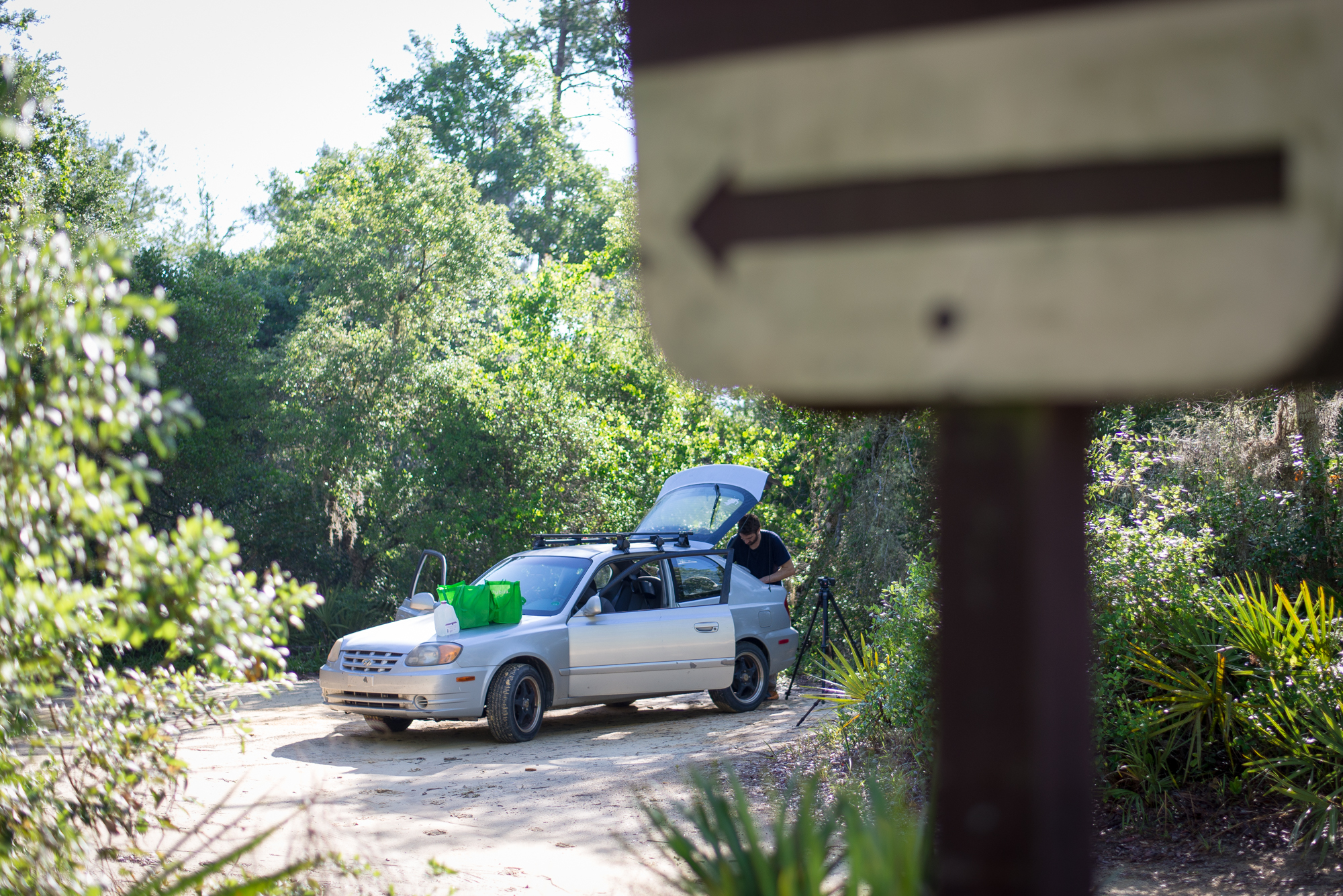Let There Be (F)light
Introduction
There have been two trips that have definitively revolutionized our Juniper Prairie Wilderness project. The first was when we started bringing GPS devices to the woods. The second occurred this weekend. But before I get to that, let me start with the reason Alex and I went to the woods in the first place. A cactus.
The headlights of a passing vehicle foreshadow the dawn of a new era in our Juniper Prairie Wilderness adventures.
The antithesis of the image above, a dog lurking in the road behind the car poetically symbolizes the passing of an age.
During last week’s trip to the Juniper Prairie Wilderness, we noticed the cacti were flowering. We decided it was a good opportunity to capture an image Alex and I have been talking about since 2016, so we devised a plan to place tiny LEDs into the cactus buds and photograph the warm glowing buds against the cool predawn light.
In theory our plan was simple: place the LEDs into the centers of the buds, feed the wires along the backside of the cactus and hide the batteries behind the leaves. The problem with theories is they neglect the realities of spiky cactus glochids, tenaciously blood-thirsty mosquitoes and the ever-present war on rapidly changing light.
I took this image at Hopkins Prairie in 2016 during our first camping trip together. I remember discussing how difficult it is to take a nice photo of a prickly pear cactus.
Project blueprints sketched on Alex’s whiteboard during our weekly meeting last Thursday.
I took this image on my phone during last week’s trip. We designed our project around this cactus due to its large display of buds and close proximity to the Yearling Trail.
Here is the same cactus exactly seven days later. To our sad surprise, most of the buds had died and fallen off, save the two that were completely green in the previous image.
Even failure glows in the dark. After some research, I learned that what we had originally thought were buds were actually what are called “old flowers.” By the time I took that first cell phone image, the flowers had already bloomed, shriveled, and were in the process of falling off, hence the reason why, when we returned only one week later, the same cactus had only two real buds.
Maybe it was the spikes in my fingers. Maybe it was the bites on my neck. Maybe it was the sobering realization that we likely won’t be able to attempt this shot for another year. Whatever the reason, this failure stung a little more than normal.
We eventually conceded defeat and relaxed under the cover of my favorite oak before heading south for our next project.
Alex enjoys the sunrise from the cover of an oak tree on the Yearling Trail.
Alex packs up the car as we prepare to leave Pat’s Island and head farther south.
It didn’t take long to forget about the cactus. What was just a few hours earlier the entire purpose of the trip was now a mere shadow in the inevitable wake of new technology.
Alex and I have been discussing the merits of a drone for a while. We’re both believers that dedicated tools should be used sparingly. But after realizing that the implications of a drone far outweigh the media it directly produces (we have backlogs of projects that involve using the combination of a drone and LEDs as a lighting tool), Alex took the plunge and purchased the perfect drone for our applications: a DJI Spark.
We hiked out to a prairie we call “Gorilla” for the inaugural flight.
Alex prepares to set up a temporary launch pad for the drone.
One of the practical qualities of the Spark is its compact size.
Alex’s DJI Spark, which we appropriately nicknamed “Spudnik” due to the word “Spud” written on the side of Alex’s yoga block launch pad, prepares for takeoff.
“Now I am become death, the destroyer of worlds.”
Behold.
This blog post’s name is a nod to the irony that a trip designed entirely around a lighting project will now only be remembered as the first time we sent a drone into the sky. For the first time ever, Alex and I were able to see in real time a high definition view of everything around us. It’s hard to overstate the implications.
If you’re curious about the media captured from the air, be sure to check out Alex’s blog post.














